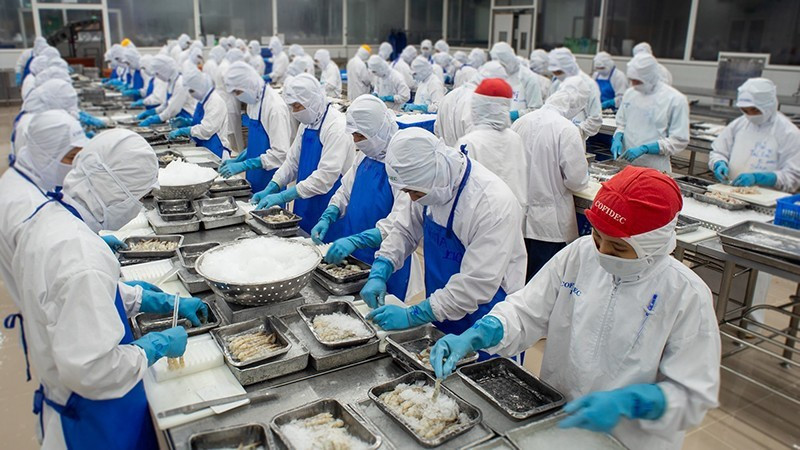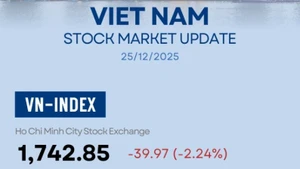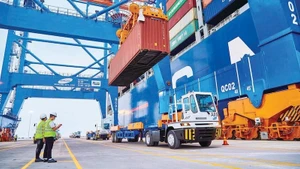In the early months of this year, Ho Chi Minh City’s seafood sector recorded several positive results. According to municipal statistics, marine-caught seafood output reached around 301,237 tonnes in the first 10 months, up 2.3% year-on-year, while aquaculture output was estimated at 63,218 tonnes, an increase of 6.4%. According to the Digital Transformation Department under the Ministry of Agriculture and Environment, Viet Nam’s seafood exports in the same period were valued at about 9.31 billion USD, representing a 12.9% rise from 2024. China, the US and Japan remained the three largest importers of Vietnamese seafood, accounting for 20%, 17.4%, and 15.1% of total exports respectively.
China and the Hong Kong (China) Special Administrative Region continued to lead among Viet Nam’s largest seafood import markets, driven by high demand and favourable logistics costs. The US ranks second; however, anti-dumping duties and stringent requirements under the Marine Mammal Protection Act (MMPA) pose significant obstacles for Vietnamese exporters. Japan, the EU and the Republic of Korea follow, while ASEAN and the Middle East have also emerged as promising destinations.
Among major export categories, shrimp remains the top performer, bringing in around 3.89 billion USD in the 10 months — up 21.6% year-on-year — largely thanks to stable demand in the US, Japan and the EU, as well as increased orders within the region. Pangasius exports reached approximately 1.66 billion USD, up 7.5%, supported by recovering demand in China, the US and several Middle Eastern markets, reinforcing Viet Nam’s position on the global seafood map.

According to the Viet Nam Association of Seafood Exporters and Producers (VASEP), positive export figures reflect not only the sector’s robust recovery following recent volatility, but also businesses’ ability to adapt amid lingering global uncertainties.
VASEP assesses that businesses have achieved impressive results thanks to their flexibility in accelerating shipments and seizing opportunities before new tax policies and technical barriers come into effect. Many firms have proactively restructured markets, increased exports to Asia and strengthened their foothold in traditional markets. Additionally, investment in value-added processed products — meeting strict standards on quality, safety and traceability — has bolstered the competitiveness of Vietnamese seafood, especially in mid- and high-end segments.
However, despite positive growth prospects, Viet Nam’s seafood sector continues to face significant challenges and obstacles. In the US market, anti-dumping and countervailing duties are narrowing profit margins. In addition, the stringent harvesting requirements under the MMPA are placing considerable pressure on wild-caught seafood products. In the EU, the IUU yellow card has yet to be lifted, undermining business reputation and increasing export-related costs. At the same time, competitive pressure from regional rivals such as India, Thailand and Indonesia is intensifying, particularly in the shrimp and pangasius segments.
Against this backdrop, experts believe that businesses must be more proactive and innovative if they are to sustain their growth momentum. The seafood industry needs to focus on three key directions. First, it must closely monitor market movements and trade policies to promptly adjust strategies and avoid risks when new barriers arise.
Secondly, exporters need to restructure their market portfolio. Alongside maintaining traditional markets such as the US, the EU and Japan, businesses should step up efforts to tap opportunities in ASEAN, the Middle East and less competitive niche markets.
Thirdly, the industry must diversify products and increase value addition. These are the key factors enabling Viet Nam’s seafood industry to maintain sustainable competitiveness, especially as global consumers increasingly prioritise high-quality, sustainable and safe products.
In addition, businesses must accelerate innovation, apply technology in aquaculture and processing, and strengthen national branding through premium culinary channels and e-commerce platforms.
















